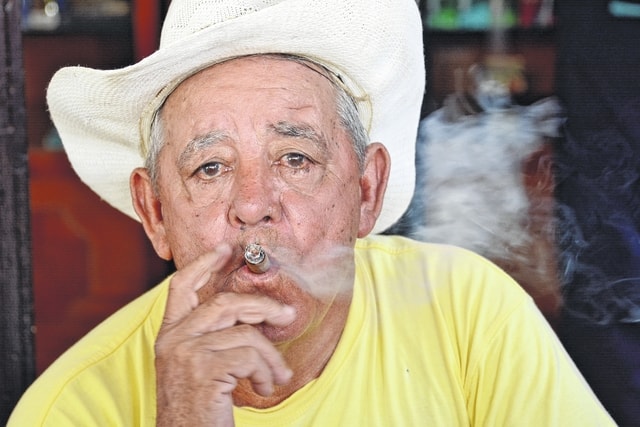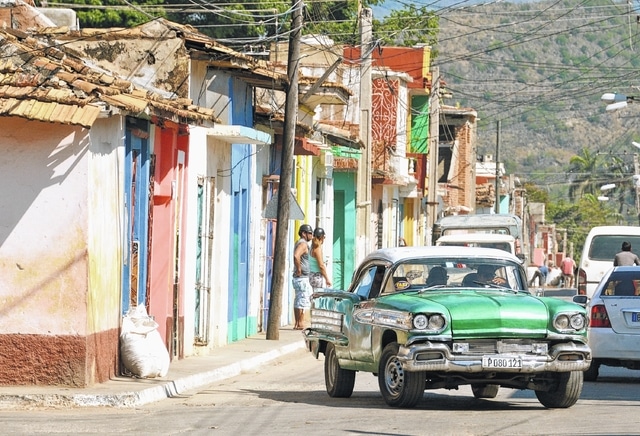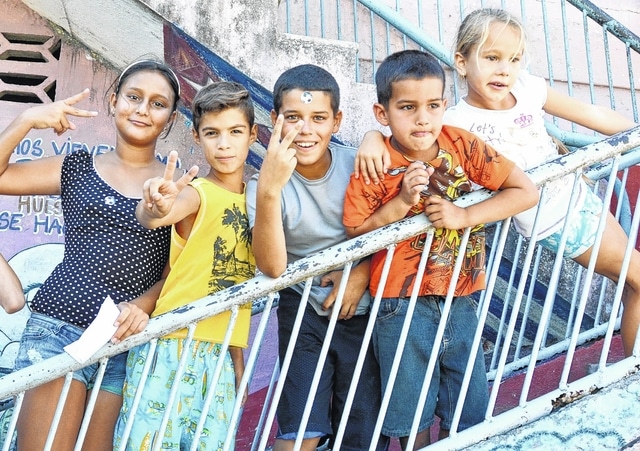


Four community members plus seven people with Wilmington College ties visited Cuba for a week, curious to learn about the island with which the United States, after more than 50 years, is normalizing relations.
Lesle Goodhart of Blanchester said it’s clear there is a lot of poverty there, but she thinks people’s basic needs are met.
“Everyone there is very well educated. It’s not the same type of poverty that I’ve seen in other parts of the world because people are educated,” said Goodhart.
Wilmington College Political Science Professor Michael Snarr said it would have been easy for the Cubans they saw to yell “Go home Americans” or something like it, but they didn’t hear that.
Mark Denniston, the WC director of work programs and international partnerships, said he thought the tour group would see more of a military presence on the streets than they did.
Bob Goodhart, Lesle’s husband, said the people appear to be family-oriented and community-oriented.
Snarr said he thought one piece of propaganda the group was fed is that Cubans weren’t political or didn’t concern themselves with politics.
“So we didn’t get a good sense about how frustrated or how happy the people are with the government,” added the professor.
Brenda Hollon-Craig of Blanchester said she thinks she could be happy as an older person in Cuba. The first place the tourists went was similar to a senior center.
Hollon-Craig said it was fascinating to watch the senior people get up and do their dances, and Lesle Goodhart recalled that the seniors played games with the American visitors and told their life stories, and one elder woman who danced had hair that was dyed purple.
“I think I could probably have the majority of my needs met in retirement there, but if you’re a young person looking to your whole life and looking at the outside world, I don’t think that they would want to live there,” Lesle Goodhart remarked.
One stop on the trip was a Bay of Pigs museum, near the place on the island’s southern shore where, in April 1961, Cuba was the target of 1,400 American-trained Cubans who had fled their homes when Castro took over two years earlier.
Many Cubans are very proud they overcame the invading forces, Lesle Goodhart thinks.
A new law permits Cubans to sell their house where formerly home ownership was by inheritance, said Snarr and Lesle Goodhart.
She said it will be interesting to see how Cuba changes over time, because she got the sense “they don’t want rampant capitalism, but they would like expanded freedoms and opportunities.”
Snarr said he left with more questions than answers, such as what direction exactly will the Cuban nation go in the future?
It seems pretty clear from what they learned, he said, that there will be people who now will be allowed to become fairly wealthy.
“I think everyone I talked to agreed that the gap between the rich and the poor would increase. So, how do you keep the Cuban [economic] model if you start getting that gap between rich and poor?” wondered Snarr.
“In a moment of candor, one of the tour guides said there are a lot of lazy people in Cuba. And so, assuming that’s true, and I do, and you’re going to be allowed to get rich now, how’s that gap between the rich and poor going to work out as far as resentment, between the poor looking toward the rich. Just how do you keep that Cuban economic model if you have a growing gap between rich and poor?” he added.
Denniston said he now can better understand how it was that Fidel Castro came to power in 1959, what with the earlier exploitation by Spain and the United States, and by General Fulgencio Batista who was overthrown by Castro’s guerrilla forces.
Lesle Goodhart related that one Cuban said that while they realize the tourist group was comprised of Americans, they also know that people are not their government.
Snarr said he found out late in the tour that the traveling group didn’t get the exact itinerary they had worked out with the company.
He said he wanted to see more farms, and had also expected to interact with students at the University of Havana, but that did not occur.
Deniston said he feels like Cuban society is “a pretty equal society” when it comes to gender.
Lesle Goodhart said some of the homes they went in — houses that had belonged to wealthy people before the 1959 revolution — were “grand beyond imagination.”
In contrast, if a Cuban presently has a private enterprise, Lesle Goodhart said her understanding is that 90 percent goes to the government and the individual keeps 10 percent.
Currently, Americans cannot visit Cuba simply for a typical vacation, stated WC Director of Public Relations Randy Sarvis. A special visa is required, such as the education visa utilized by the 11 tourists with Clinton County ties and the six tourists who accompanied them and who had ties to the University of Mount Union in Ohio.
With an education visa, the preponderance of the tour’s venues is determined to be educational in nature, Sarvis said.
Reach Gary Huffenberger at 937-556-5768 or on Twitter @GHuffenberger.




